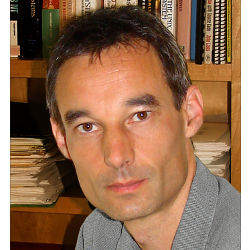
To the greater public, the people behind groundbreaking computational advances may be anonymous. However, the results of those advances are easy to show anybody, and within the computer science community, M. Frans Kaashoek believes there is a sense of camaraderie and mutual regard that assures a stunning pace of technological innovation.
“I think it would be fairly simple to explain how important this work is,” says Kaashoek, professor of computer science at the Massachusetts Institute of Technology (MIT), “because it is easy to see how dramatically society is changing due to the computer and innovations in computer science. People see their life change because they have Twitter or the iPhone. It’s quite clear that a lot of thought and innovation went into these technologies, and that this work is the result of a lot of people standing on other peoples’ shoulders.”
Kaashoek’s peers have recognized him as among those possessing the discipline’s brawniest metaphorical shoulders with the 2010 ACM-Infosys Foundation Award in the Computer Sciences. The award, which carries a $150,000 prize and recognizes work by young computer scientists and systems developers, was awarded to Kaashoek for “his contributions to the structuring, robustness, scalability, and security of software systems underlying many applications.”
Kaashoek, 46, deflects celebratory ruminations about the ACM-Infosys Foundation Award in favor of praising his colleagues and students. However, Kaashoek does express an appreciation for the foundations of computational innovation, a love of programming, and a sense of virtually unlimited possibilities.
“Computers allow you to build almost anything,” he says. “Your imagination is the limit, not a physical property. Of course, there are fundamental limits, but they are not really the ones that currently limit what you can construct out of hardware and software.”
Even where those fundamental limits loom, Kaashoek and colleagues have researched methods to improve the ways computers perform. His work on exokernels, for example, opened up possibilities for applications to access a computer’s physical resources much faster than those that must employ high-level abstractions.
“Computers allow you to build almost anything. Your imagination is the limit, not a physical property.”
Kaashoek’s current research may have profound ramifications for the future of computational architectures. A recent experiment evaluating system applications on a 48-core Linux architecture revealed relatively simple coding changes, rather than wholesale operating system rewriting, may improve multicore system performance. In the security domain, Kaashoek is conducting research into “undo computing” with MIT colleagues Nickolai Zeldovich and Robert Morris. The basic premise is the exploration of “undoing” any actions caused by malignant code, while preserving any subsequently created, legitimate data.
Kaashoek acknowledges a system that would erase infected code and save good work would be a boon to the vast majority of computer users and administrators, but says his intended audience is the development community. His goal is to create well-functioning systems upon which robust innovation can flourish. And he is trying to pass along this love of systems work to his students as his mentor at Vrije Universiteit, Andrew S. Tanenbaum, did to him.
“I liked programming and building software artifacts, but had no idea how exciting research could be, and that a small team could build complete systems to demonstrate and evaluate an idea,” says Kaashoek. “In terms of advising, I learned a lot from Andy. He worked with a few students, allowing him to work with them in a true apprentice relationship. I have tried to follow that same model with my own students.”
A model that may also be strengthening the next generation of strong shoulders.




Join the Discussion (0)
Become a Member or Sign In to Post a Comment